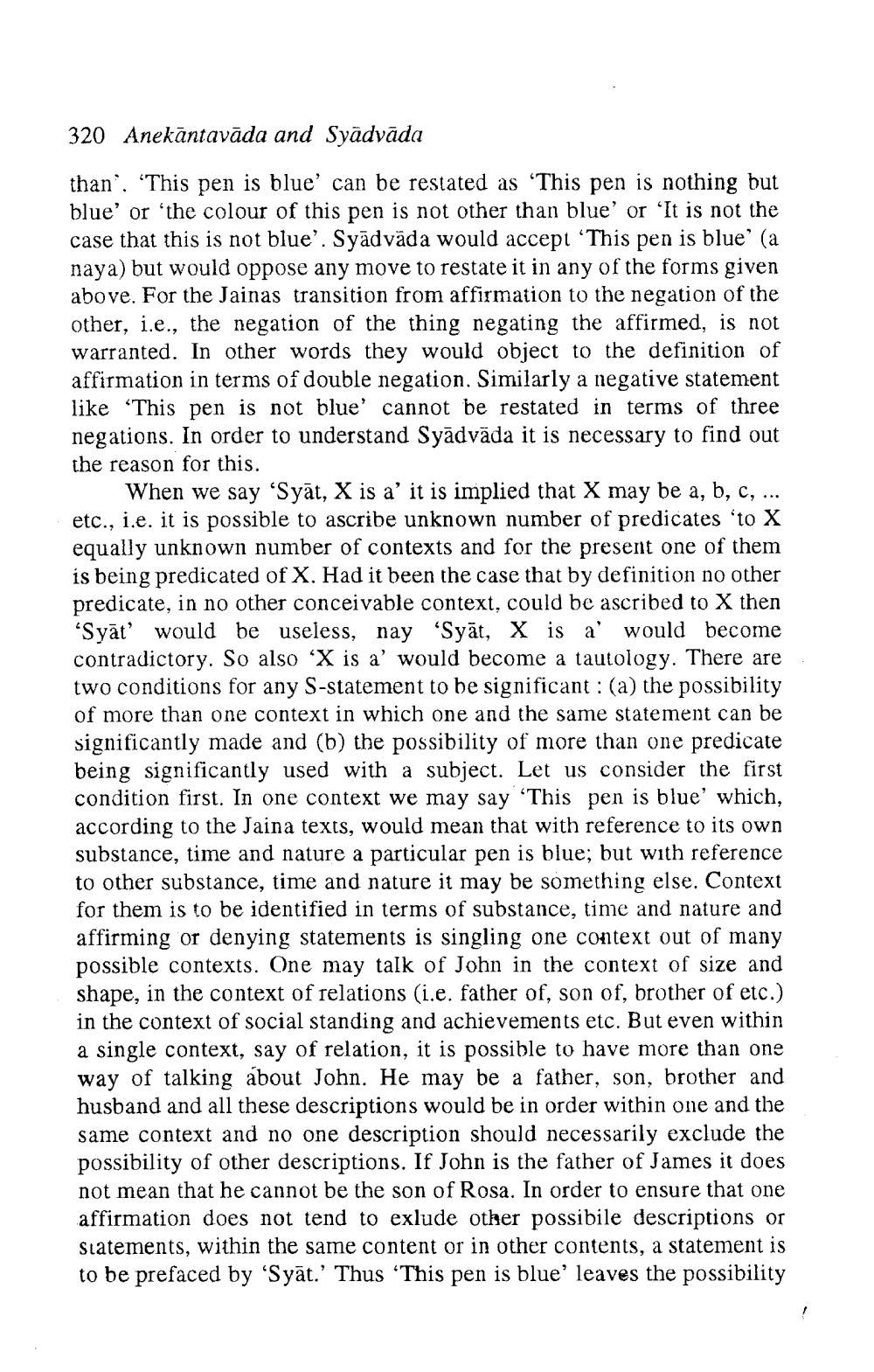________________
320 Anekāntavāda and Syädvāda
than'. “This pen is blue' can be restated as 'This pen is nothing but blue' or 'the colour of this pen is not other than blue' or 'It is not the case that this is not blue'. Syādvāda would accept 'This pen is blue' (a naya) but would oppose any move to restate it in any of the forms given above. For the Jainas transition from affirmation to the negation of the other, i.e., the negation of the thing negating the affirmed, is not warranted. In other words they would object to the definition of affirmation in terms of double negation. Similarly a negative statement like 'This pen is not blue' cannot be restated in terms of three negations. In order to understand Syādvāda it is necessary to find out the reason for this.
When we say 'Syāt, X is a' it is implied that X may be a, b, c, ... etc., i.e. it is possible to ascribe unknown number of predicates 'to X equally unknown number of contexts and for the present one of them is being predicated of X. Had it been the case that by definition no other predicate, in no other conceivable context, could be ascribed to X then 'Syāt' would be useless, nay ‘Syāt, X is a' would become contradictory. So also X is a' would become a tautology. There are two conditions for any S-statement to be significant : (a) the possibility of more than one context in which one and the same statement can be significantly made and (b) the possibility of more than one predicate being significantly used with a subject. Let us consider the first condition first. In one context we may say “This pen is blue' which, according to the Jaina texts, would mean that with reference to its own substance, time and nature a particular pen is blue; but with reference to other substance, time and nature it may be something else. Context for them is to be identified in terms of substance, time and nature and affirming or denying statements is singling one context out of many possible contexts. One may talk of John in the context of size and shape, in the context of relations (i.e. father of, son of, brother of etc.) in the context of social standing and achievements etc. But even within a single context, say of relation, it is possible to have more than one way of talking about John. He may be a father, son, brother and husband and all these descriptions would be in order within one and the same context and no one description should necessarily exclude the possibility of other descriptions. If John is the father of James it does not mean that he cannot be the son of Rosa. In order to ensure that one affirmation does not tend to exlude other possibile descriptions or statements, within the same content or in other contents, a statement is to be prefaced by ‘Syāt.' Thus ‘This pen is blue' leaves the possibility




